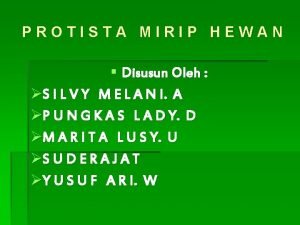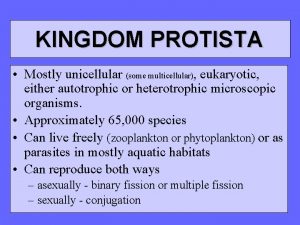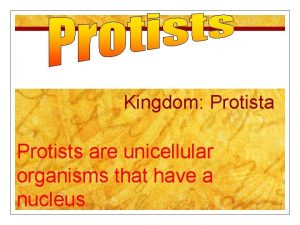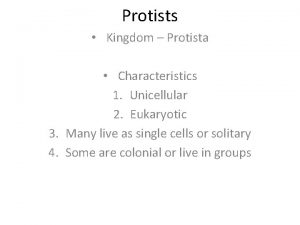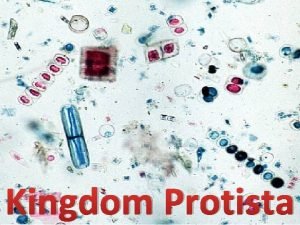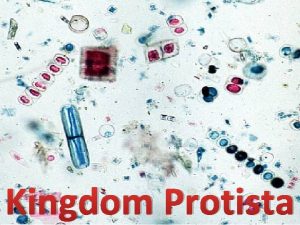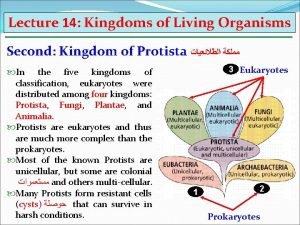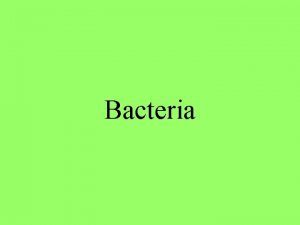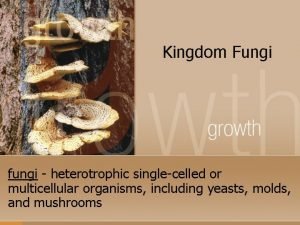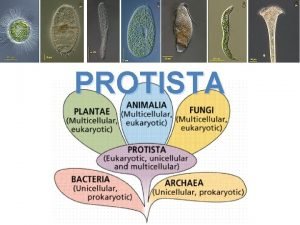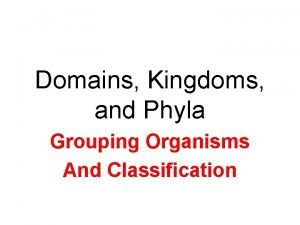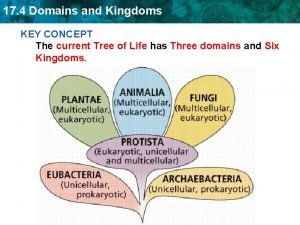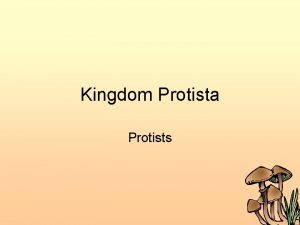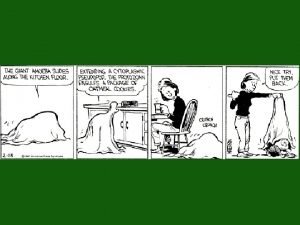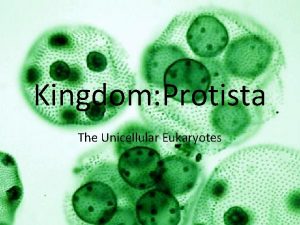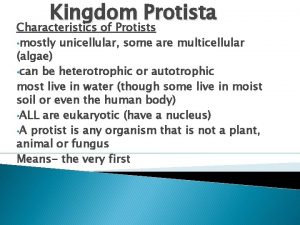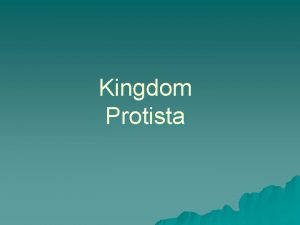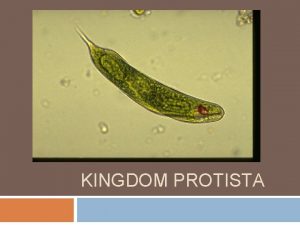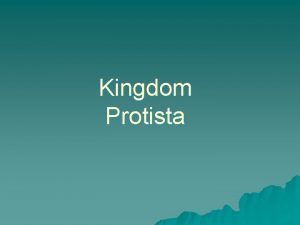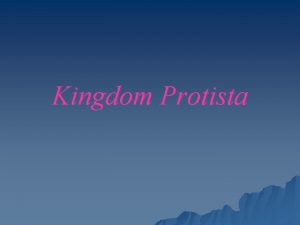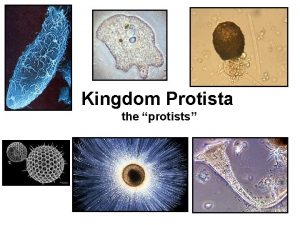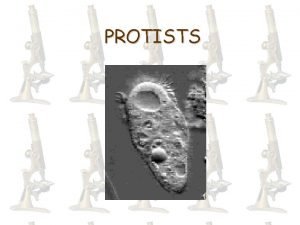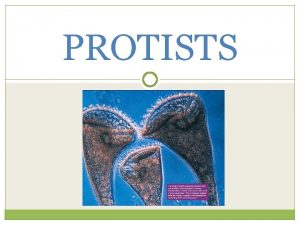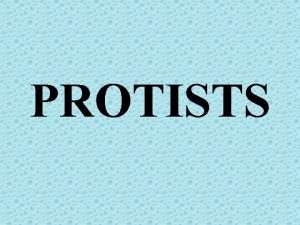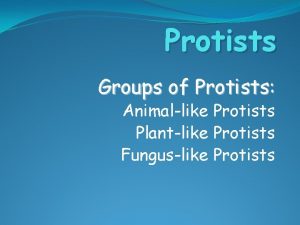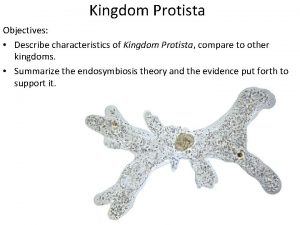KINGDOM PROTISTA The Protists General Characteristics Usually unicellular




















- Slides: 20

KINGDOM PROTISTA The Protists!

General Characteristics • Usually uni-cellular – Generally live as individuals, some form colonies • Eukaryotes (contain a nucleus) • Most live in watery environments • Some autotrophs (plant-like), some heterotrophs (animal/fungus-like) • Most likely evolved after bacteria

Animal-like Protists • • PROTOZOANS Lack a cell wall Heterotrophs Mobile

Protozoan Groups • 1) Sarcodines: -use “pseudopod” for movement and food gathering *pseudopod- “false foot”- extension of cytoplasm and cell membrane -some have protective “shells” Ex. Amoeba

Protozoan Groups • 2) Ciliates: – Use “cilia” for movement and food gathering • Cilia- hairlike projections – Two kinds of nuclei: • Large- life functions • Small- conjugation (reproduction) – Ex. Paramecium

Protozoan Groups • 3) Zooflagellates: – Use “flagella” (1 -8) for movement – Responsible for some diseases and digestion of some materials – Ex. Trichonympha

Protozoan Groups • 4) Sporozoans: – Can’t move on own, form “spores” to move from host to host – Parasitic (feeds on cells and fluids of host) – Ex. Plasmodium (causes malaria)

Plant-like Protists • aka ALGAE • Autotrophs (photosynthetic)- contain chloroplasts • Produce Oxygen • Some have flagella

Uni-cellular Algae • 1) Euglenophytes – Pouch with two flagella – No cell wall (pellicle- tough, flexible membrane) – Reproduce asexually – Reddish eyespot – Ex. Euglena

Uni-cellular Algae • 2) Dinoflagellates – Some heterotrophs – Usually two flagella – Covered in cellulose plates – Many luminescent

Uni-cellular Algae • Chrysophytes – Gold-colored chloroplasts – Not all cell walls contain cellulose – Store food as oil – Reproduce sexually and asexually

Uni-cellular Algae • Diatoms – Many shapes due to silica in cell walls – Used in car polish and toothpaste

Multi-cellular Algae • Phylum Rhodophyta (Red Algae) – Can live at great depths due to special pigments – Lack flagella – Ex. Irish Moss (algae)

Multi-cellular Algae • Phylum Phaeophyta (Brown Algae) – Contains special brown pigment (dark yellow to brown in color) – Some have “bladders” for floating – Ex. Giant Kelp

Multi-cellular Algae • Phylum Chlorophyta (Green Algae) – Cellulose in cell walls – Chlorophyll is main pigment – Usually live as single cells, can form colonies

Fungus-like Protists • Characteristics – Heterotrophs – Most have cell walls – Complex life cycle • Some amoeba-like • Some use flagella • Some produce spores

Fungus-like Protist Groups • Slime Molds: – Moist, flat blobs – Reproduce by producing a fruiting body with spores • Each spore can develop into a new organism

Life Cycle of Slime Molds Spore Sm. Ameba-like cell Lg. cell w/ many nuclei Spores produced OR Spore Sm. Ameba-like cell Mass of cells Spores produced


Fungus-like Protist Groups • Water Molds – White, fuzzy (grows on dead fish, etc. ) – Sexual and asexual phases of life cycle
 Mostly unicellular
Mostly unicellular Kingdom protista multicellular unicellular
Kingdom protista multicellular unicellular Old kingdom middle kingdom new kingdom
Old kingdom middle kingdom new kingdom Old kingdom middle kingdom new kingdom
Old kingdom middle kingdom new kingdom Youtube egypt
Youtube egypt Mentohotep
Mentohotep Protista unicellular or multicellular
Protista unicellular or multicellular Are protists unicellular or multicellular
Are protists unicellular or multicellular Are protists unicellular
Are protists unicellular Protista characteristics
Protista characteristics Protista examples
Protista examples 3 protists
3 protists Kingdom protista characteristics
Kingdom protista characteristics مملكة البلازموديوم
مملكة البلازموديوم Unicellular prokaryotes kingdom
Unicellular prokaryotes kingdom Is fungi multicellular
Is fungi multicellular Kingdom fungi unicellular or multicellular
Kingdom fungi unicellular or multicellular Protista
Protista Protista kingdom
Protista kingdom Two examples of archaebacteria
Two examples of archaebacteria Chapter 17 domains and kingdoms concept mapping answers
Chapter 17 domains and kingdoms concept mapping answers

